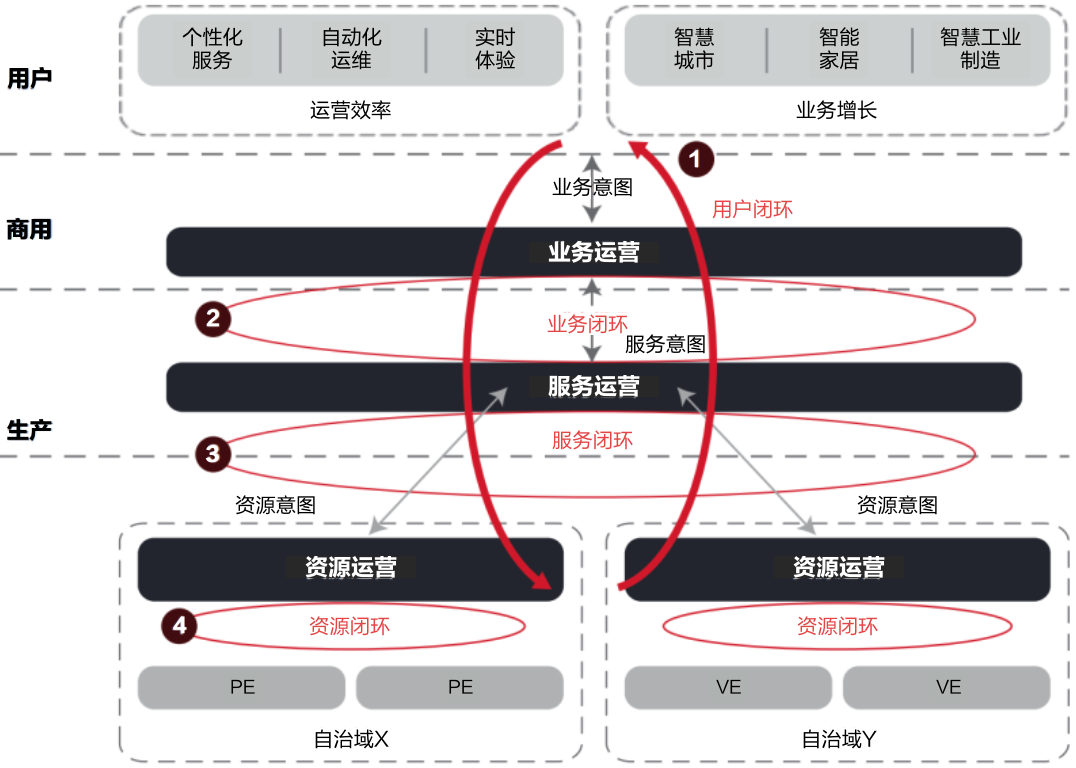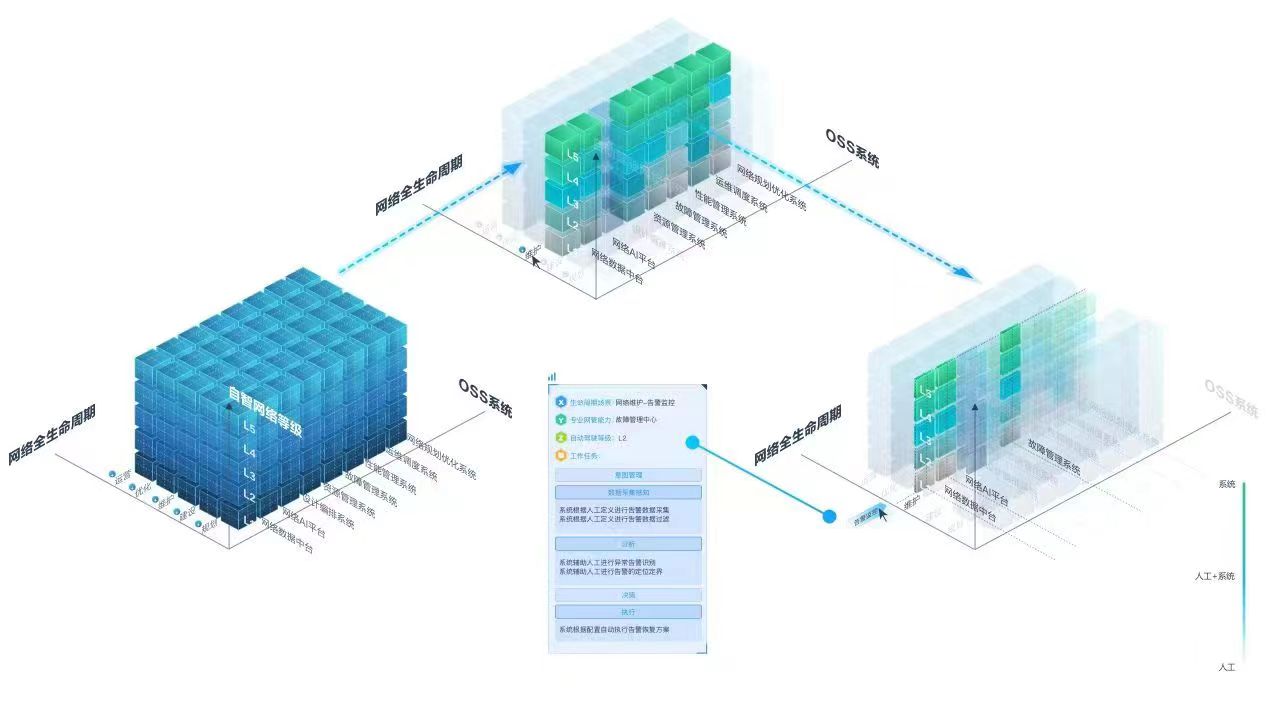With the continuous introduction of new technologies such as NFV, SDN, and cloud native into 5G network construction and business development, and the ever-increasing demands on 5G network real-time response and end-to-end experience in various business scenarios, communication operators face huge challenges in network operation and maintenance. Therefore, mainstream international standard organizations and operators have put forward the concept of "Autonomous Networks". Based on its own exploration and practice, AsiaInfo proposes a three-step approach of "autonomous scene sorting, evaluation system building, system planning and building" to help China promote and implement the concept of "Autonomous Networks" .
5G calls for "Autonomous Networks"
5G has the characteristics of "high bandwidth, low latency, and large connection", providing "Zero-X" (zero wait, zero contact, zero failure) experience for vertical industries and C-end consumers. The network management objectives of telecommunication operators have also changed from "ensuring stable network operation" to "supporting business development efficiently", resulting in a substantial increase in the complexity of network operation and management. "Autonomous Networks" can not only help operators seize 5G business opportunities, but also promote them to improve customer experience and reduce operating costs. "Autonomous Networks" will become an important foundation for their digital transformation.
Autonomous Networks Framework, Development of Mainstream Operators and Current Challenges
"Autonomous Networks" aims to build network "Self-X" capabilities (self-configuration, self-healing, and self-optimization) through an end-to-end network automation and intelligent method system. Its purpose is to bring convenience to customer through streamlined processes. Its "zero-wait, zero-contact, and zero-fault" features enable operators to quickly launch and activate services, improve network construction planning and investment effectiveness, enhance network resource utilization and capital expenditure benefits, and help operators reduce operating expenses.

Figure: TMF Autonomous Networks Framework
"Autonomous Networks" includes three operational levels of "resources, services, and business", and four closed-loop system frameworks of "users, business, services, and resources". According to the L0-L5 six-level self-awareness evaluation method that has been agreed by the industry, and the core concepts of single-domain autonomy, hierarchical closed-loop, and intent-driver, the network self-awareness level of most operators in China and abroad is still between L1 and L2. Therefore, three major communication operators in China have proposed the goal of evolving to the L4 of network autonomous by 2025.
At the same time, the development of Autonomous Networks also faces the following challenges. Is it necessary to further refine the autonomous level evaluation method? How to realize cross-layer collaboration between network management system and network infrastructure? How to deploy the communication artificial intelligence "Autonomous Brains" that the evolution of Autonomous Networks depend on?
AsiaInfo's "Three Steps" to Promote and Implement the Concept of Autonomous Networks
AsiaInfo believes that, guided by norms and standards, implementing the three-step process of "autonomous scene sorting, evaluation system building, system planning and building" will promote and implement the concept of Autonomous Networks.
First, autonomous scene sorting.
Starting from the network panorama, the needs of Autonomous Networks are sorted out in each link in the whole life cycle of the network "planning, construction, maintenance and excellent operation", and various scenarios and empowerment and digitization solutions are classified and refined.
Second, the evaluation system building.
The hierarchical evolution of autonomous networks requires a quantifiable and measurable evaluation system. This system should not only become a measure of progress for the development level of autonomous networks, but also a locator of its shortcomings and deficiencies.
Third, system planning and building.
Operators devise an implementation plan based on their own network and OSS status, personnel organization, business development and other practical factors. They clarify network and OSS construction goals, and complete automation/intelligence capability building in stages.

Figure: AsiaInfo "Autonomous Cube"
Previously, AsiaInfo, together with Chinese and US communication operators, Tsinghua University Institute for AI Industry Research and other industry-university-research partners, released the white papers such as "The Next Decade of Communication Artificial Intelligence" and "Communication Artificial Intelligence Empowers Autonomous Networks". It clearly puts forward the realization path and methodology of Autonomous Networks, the system framework of "autonomous cube", etc., introduces communication artificial intelligence and its method theme, path and framework, and provides theoretical basis and practical reference for the industry. In the future, AsiaInfo will continue to work with industry partners to jointly promote the evolution, upgrading and application of Autonomous Networks for China.





